Best 4K gaming monitors in 2022
The best 4K gaming monitors give you incredibly detailed images that make it hard to go back to anything less. Games look stunning at high resolution and, if you have the graphics card to run it, a 4K monitor will make everything look fantastic. A 4K monitor is how you can show off how powerful your gaming rig is and make use of the components you spent a lot on. Grab a good 4K monitor and make the ultimate PC gamer dream a reality.
While you'll want a top-end GPU to get the most from a 4K monitor, even the Nvidia GeForce RTX 3060 Ti and AMD Radeon RX 6700 XT can be surprisingly capable when it comes to 4K. Especially if you don't feel the need to run at max settings. And as GPU supply returns to normality—something that is starting to happen—we might actually have some next-gen cards on the way, too. And those should pretty much all be 4K-capable.
In most cases, you're going to want a VA or IPS panel, with a refresh rate above 60Hz, and some form of frame-syncing capability—either G-Sync or FreeSync. You also need to decide whether to up-size with one of the best gaming TVs instead, for deeper immersion. If you have space, that is.
Spending that little more on one of the best 4K gaming monitors is certainly worth it, especially when you consider it should see you through a decade of action-packed, next-gen gaming. It'll be able to produce breathtaking visuals for all those years, spanning many iterations of your Theseus’ ship of a PC. Think of it as a long-term investment, basically, but one that you also get to enjoy today.
Best 4K gaming monitors for gaming
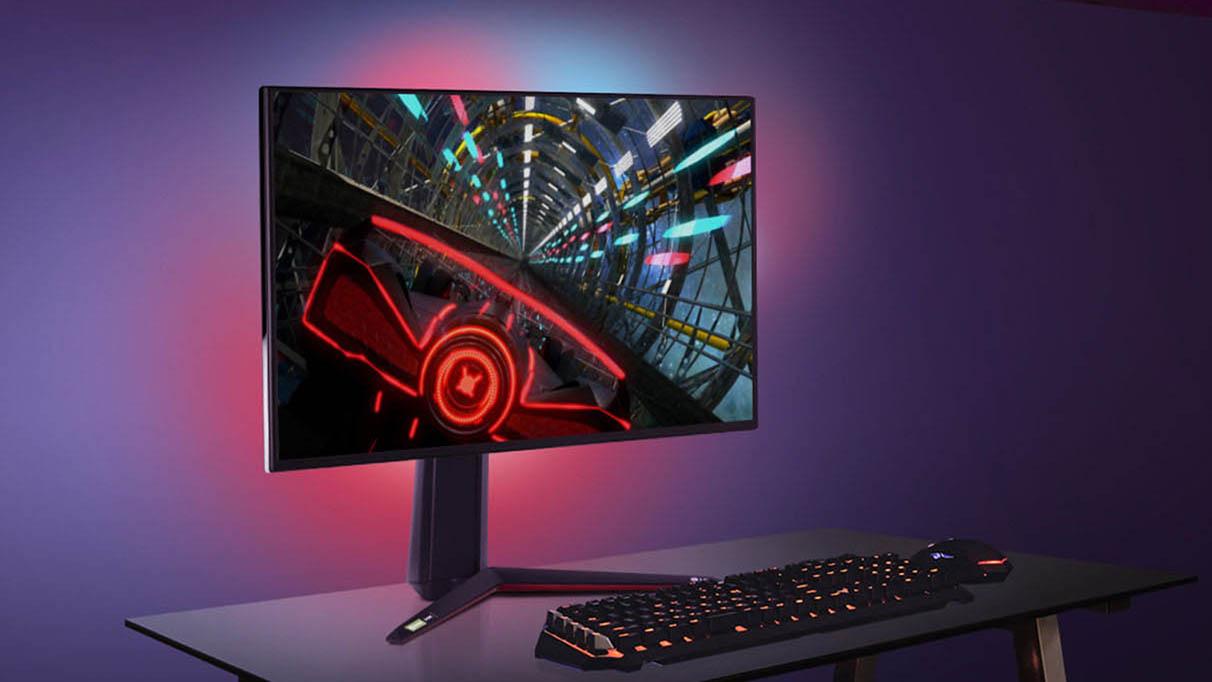

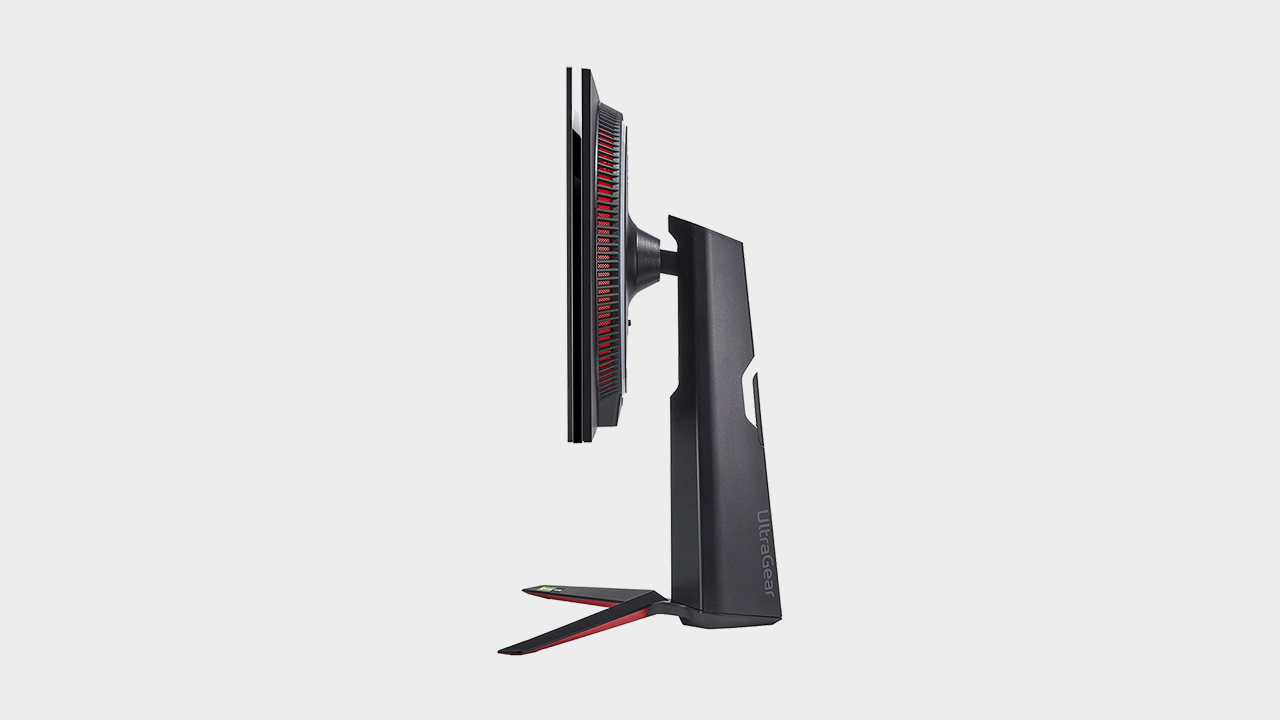
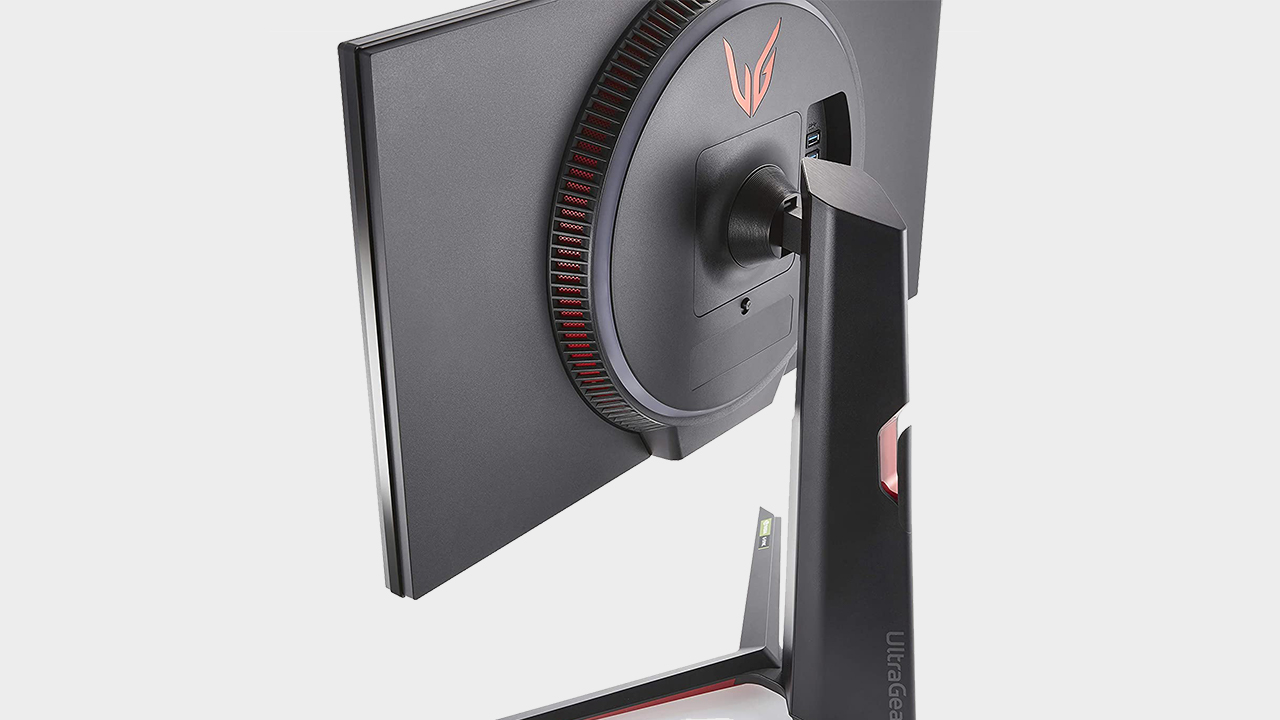
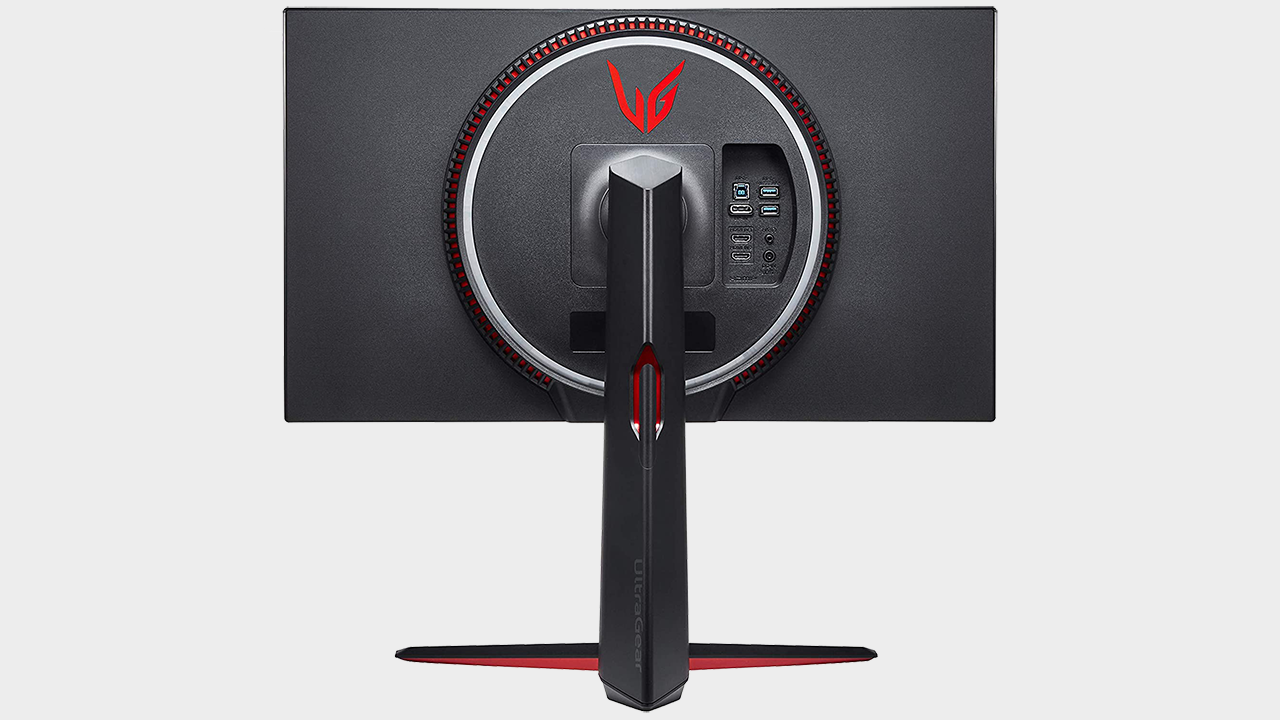
The LG UltraGear is the first 4K Nano IPS 1ms gaming monitor capable of properly showing off your next-gen GPU. This 4K 27-inch HDR monitor boasts a 144Hz refresh rate and 1ms response time—wild for a 4K monitor.
What is most impressive about this LG is the Nano IPS tech that offers a wider color gamut and stellar viewing angles. Offering both 10-bit color and a very impressive 98% coverage of the DCI-P3 gamut, the 27GN950 is a seriously high fidelity monitor. LG reckons it’s as good for content creation as it is for gaming, and we'd tend to agree.
To that, you can add compatibility with both Nvidia’s G-Sync and AMD’s FreeSync adaptive refresh, a slick slim-bezel design, and LG’s Sphere Lighting 2.0 RGB visual theatrics. Oh, and the minor matter that, you know, this is a 4K IPS monitor that runs at fully 144Hz refresh.
But what of the actual real-world experience? This is an awfully pretty panel. LG’s default calibration is virtually faultless, with impeccable detail in both black and white scales. Beyond the strict metrics, it’s a seriously vibrant and punchy display in terms of image quality on the Windows desktop.
Hop in game and it’s just as impressive. We’ll never tire of the buttery smooth goodness that is 144Hz. But combined with the crazy-sharp detail that comes with the 4K pixel grid, well, it’s pretty special. The catch, of course, is that you’ll need one heck of a GPU to make the most of the 144Hz refresh while running at 4K, though that just got a little more realistic with the latest graphics cards from both Nvidia and AMD.
The most obvious shortcoming, compared to similar but even pricier screens, involves HDR implementation. The 27GN950 does support HDR, including local dimming, and comes complete with VESA’s DisplayHDR 600 certification. However, the local dimming comprises just 16 edge-lit zones. This is a much more convincing monitor taken as a really excellent SDR panel. As an HDR display, it's disappointing.
The LG UltraGear 27GN950-B bags you a terrific panel with exquisite IPS image quality and, despite the lesser HDR capabilities, beautiful colors and contrast in your games too. G-Sync and Freesync support ensure stable pictures and smoothness in games, and the speedy refresh rate and response times back this up too.
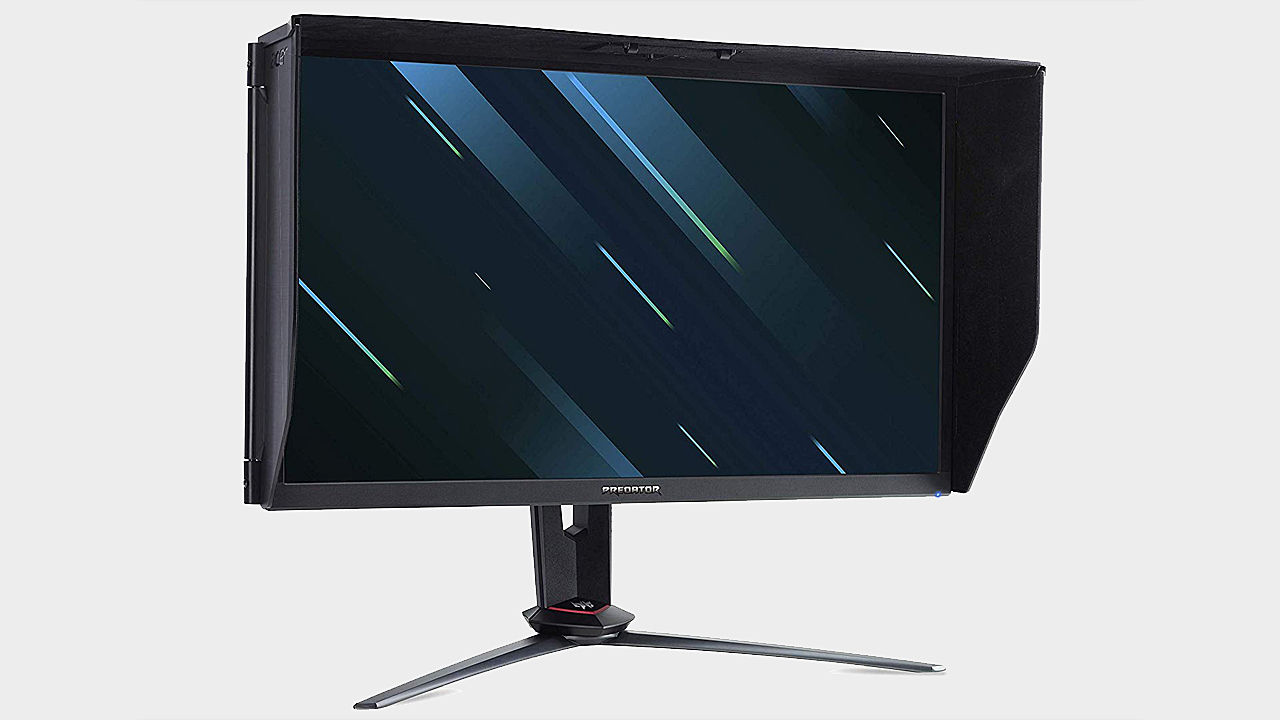
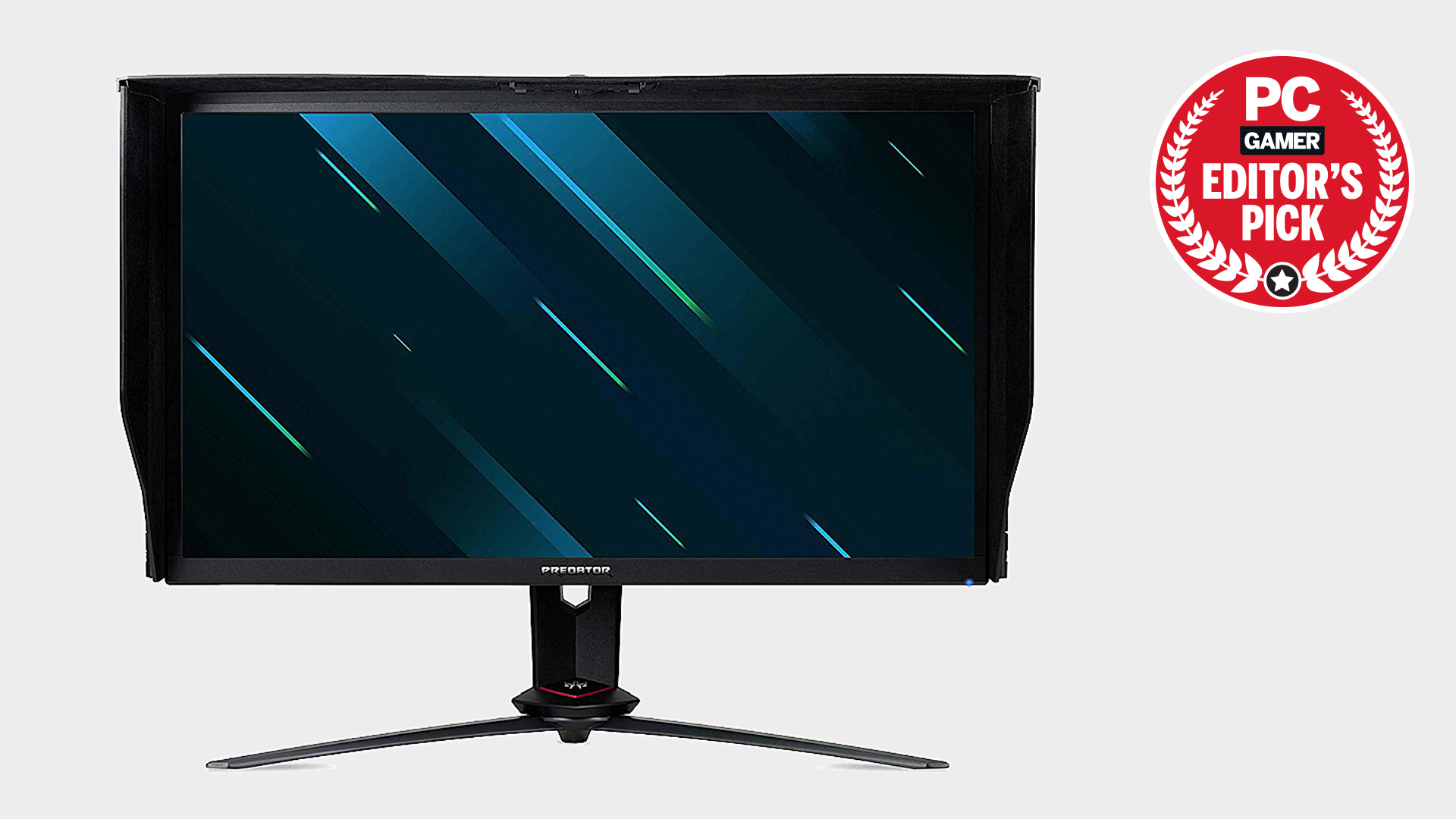
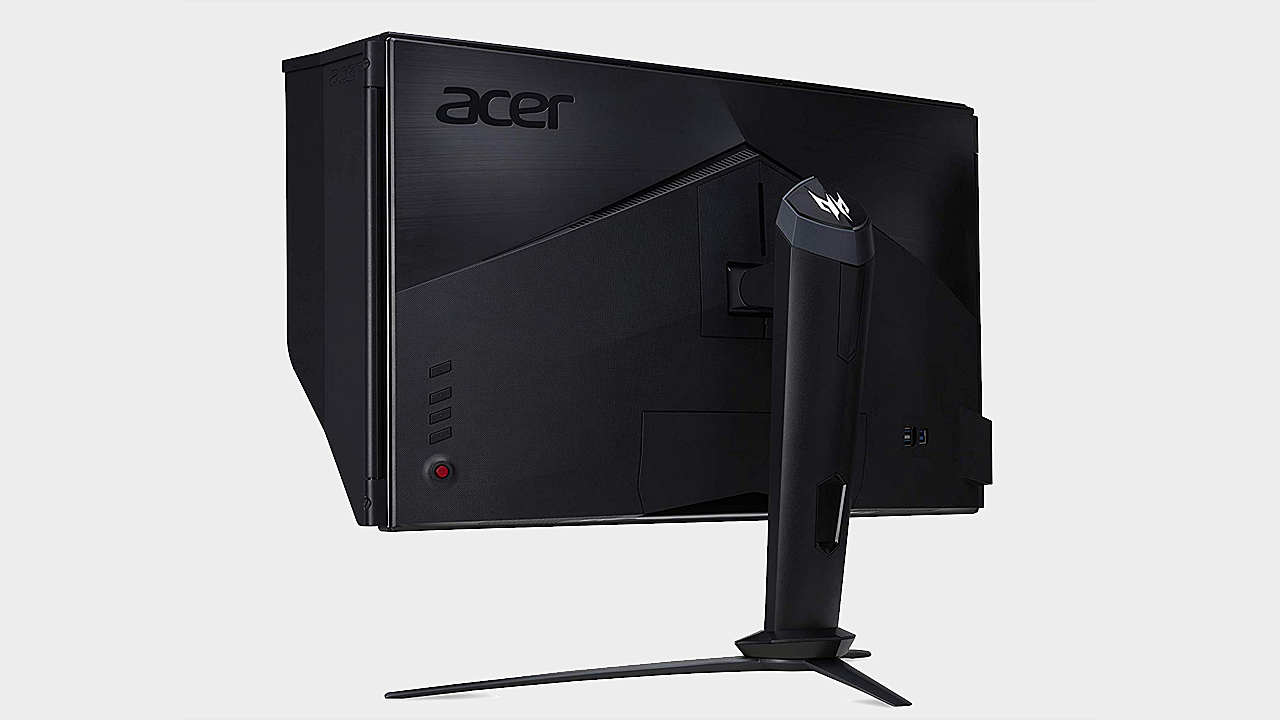

A close cousin of the Acer Predator X27, itself once the top of this pile, the XB273K is a seriously excellent 4K monitor. It harnesses everything the X27 does, trading off very little to rehouse it in a far cheaper chassis.
Now often found sitting around the $1,000 mark, it is immediately more tempting than the Acer X27, and the only real change is in the HDR; the XB273K has a slightly lower quality of HDR. But that's about it. And considering the still nightmarish state of HDR gaming on PC, that's not a huge miss.
With the privacy shields setup (reducing screen glare and reflection), I booted up some games to get testing. The glorious Assassin’s Creed Odyssey is just that: glorious. The whole game is incredibly vivid and has the crispest of image qualities to boot; no blurred or smudged edges to see and each feature looks almost perfectly defined and graphically identified. Particular highlights are the way water effects, lighting, reflections, and sheens are presented, but there is equal enjoyment to be had from landscape features, the people, and urban elements. All benefit from a widespread excellence in color, contrast, shades (and shadows), and tones.
Going darker, I turn to Metro Exodus, and am immediately greeted with great picture quality. Any scene or view from Artyom’s perspective is fantastically clear and well presented. The contrast is particularly strong with colors punching through the greys and blacks. The smaller details are equally as good, down to clothing detail, skin tone and complexion, and facial expressions once again. Exodus’s predecessor and cousin, Metro Redux proved that the Acer Predator XB273K handles near-total dark environments very well indeed. There is an immersion-heightening quality to the blacks and grays of the Metro and those games certainly don’t feel five years old on the XB273K.
Playing Apex Legends on the XB273K, at max settings, seamlessly traversing and smoothly running around Kings Canyon is one of the best Apex Legends experiences I’ve had when it comes to monitors. Not only did the image quality from the other games remain, but the speed and smoothness of the monitor provides me with a wonderful, smooth picture at 144Hz. The speed of the screen means that there is no loss in quality even when you’re spinning on the spot frantically trying to find your enemies, or flitting between shots in cover.
Whatever game you play, you're going to enjoy excellent picture quality, with terrific color vibrancy, contrast, and depth; the 144Hz refresh rate means it's excellent for competitive shooters too. G-Sync offers the best adaptive sync technology, an impressive array of ports covers you, and overall it offers such a well-rounded overall experience you'll have zero regrets.
Read the full Acer Predator XB273K review.
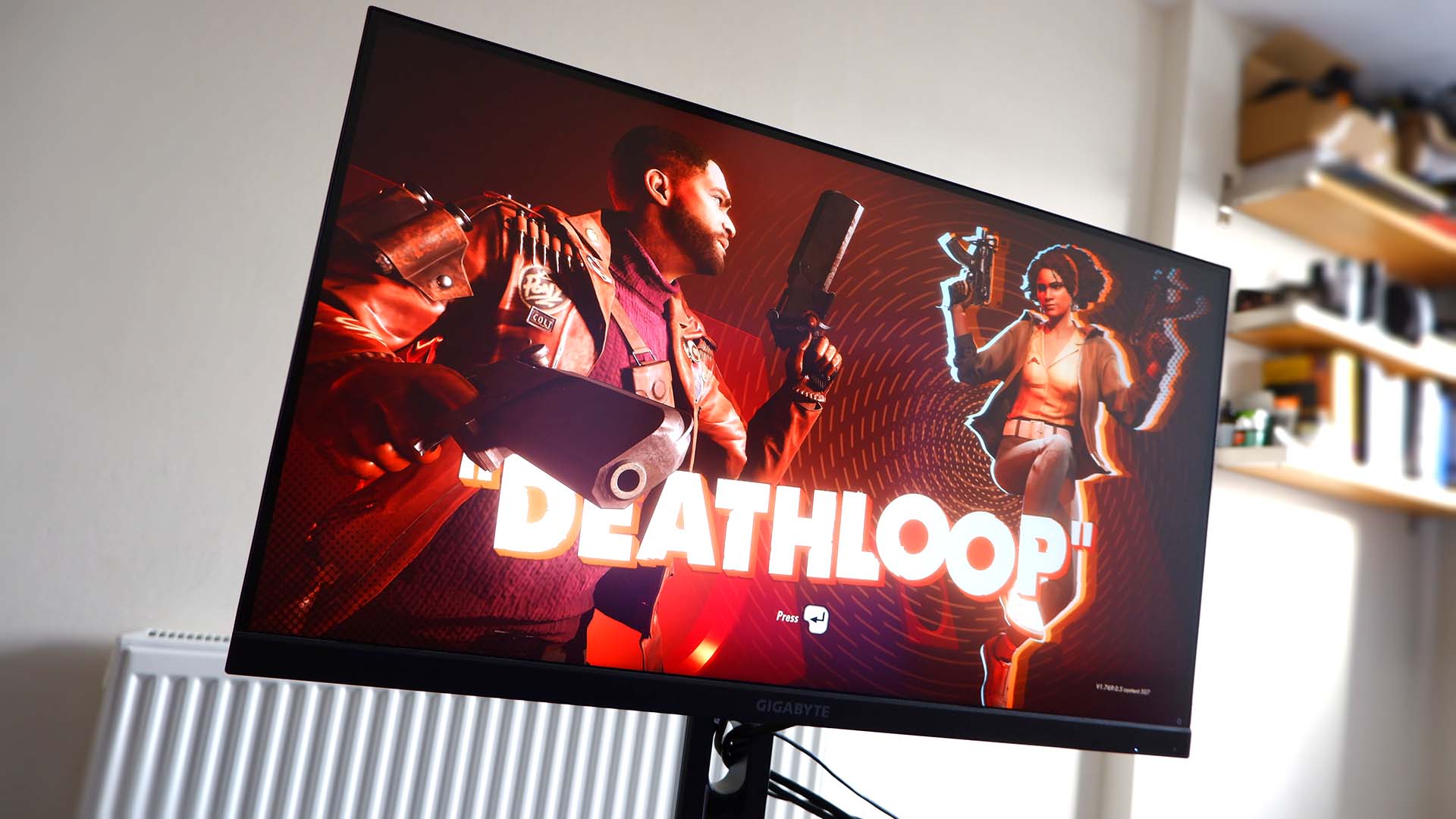
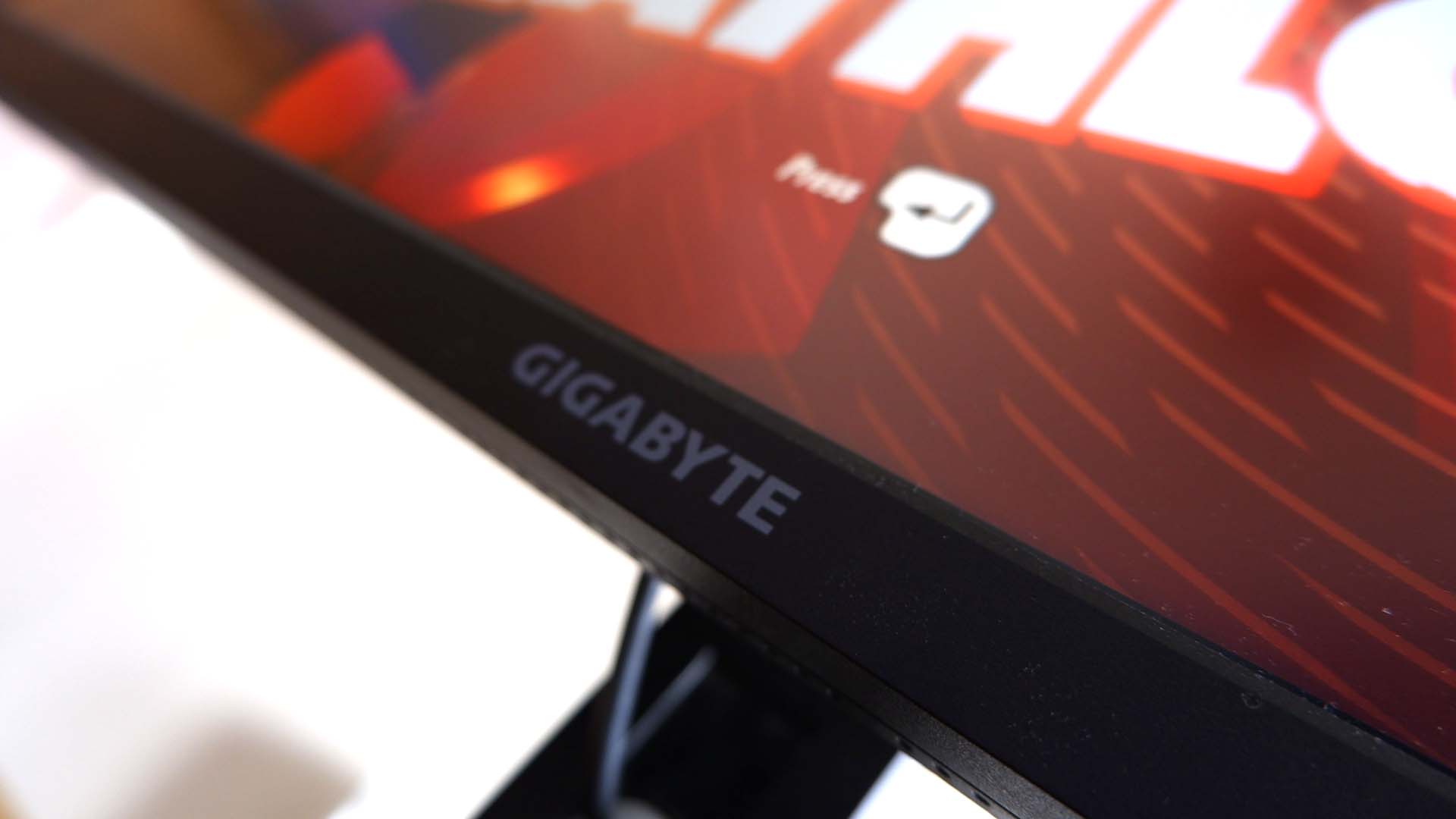
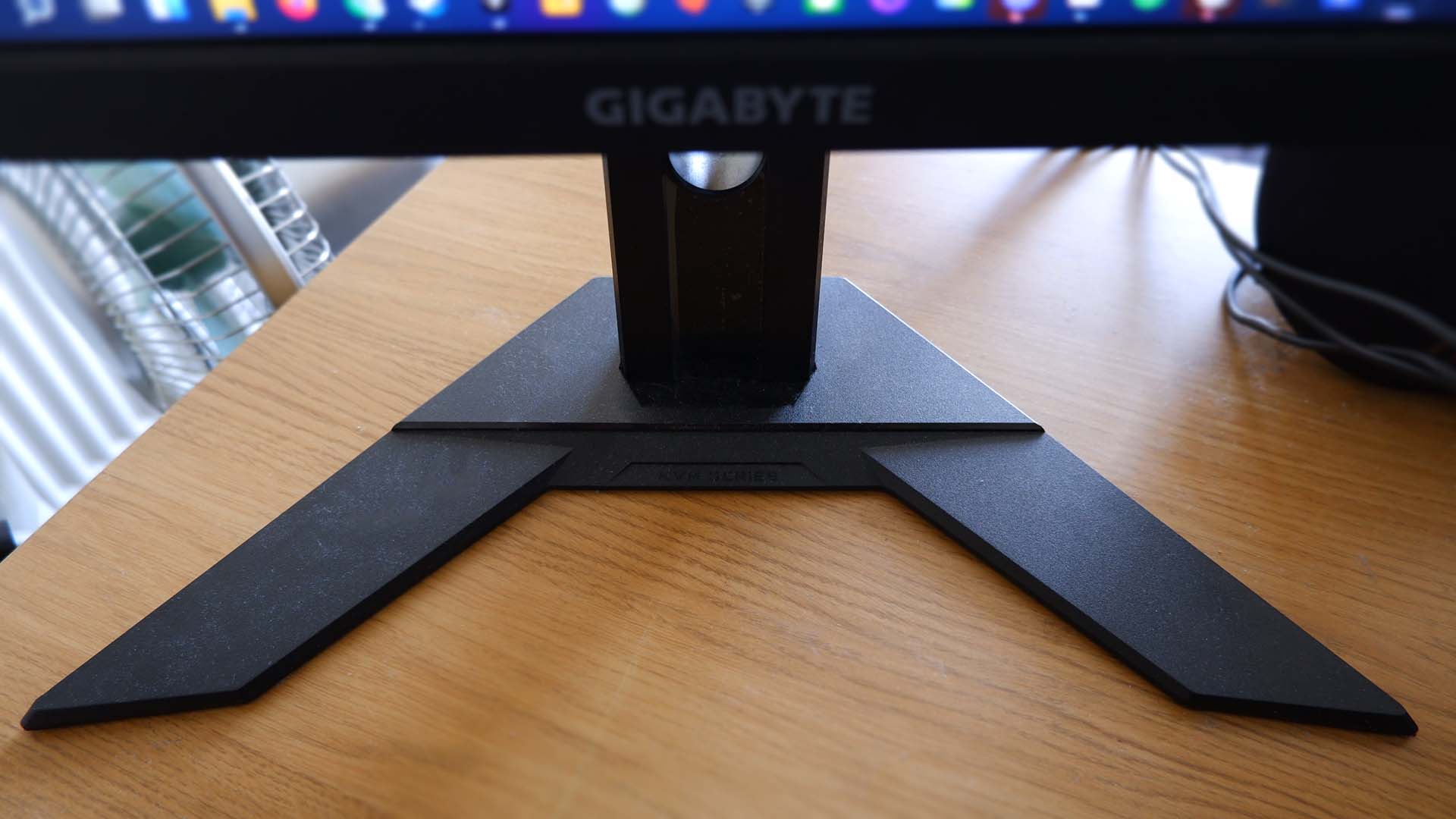
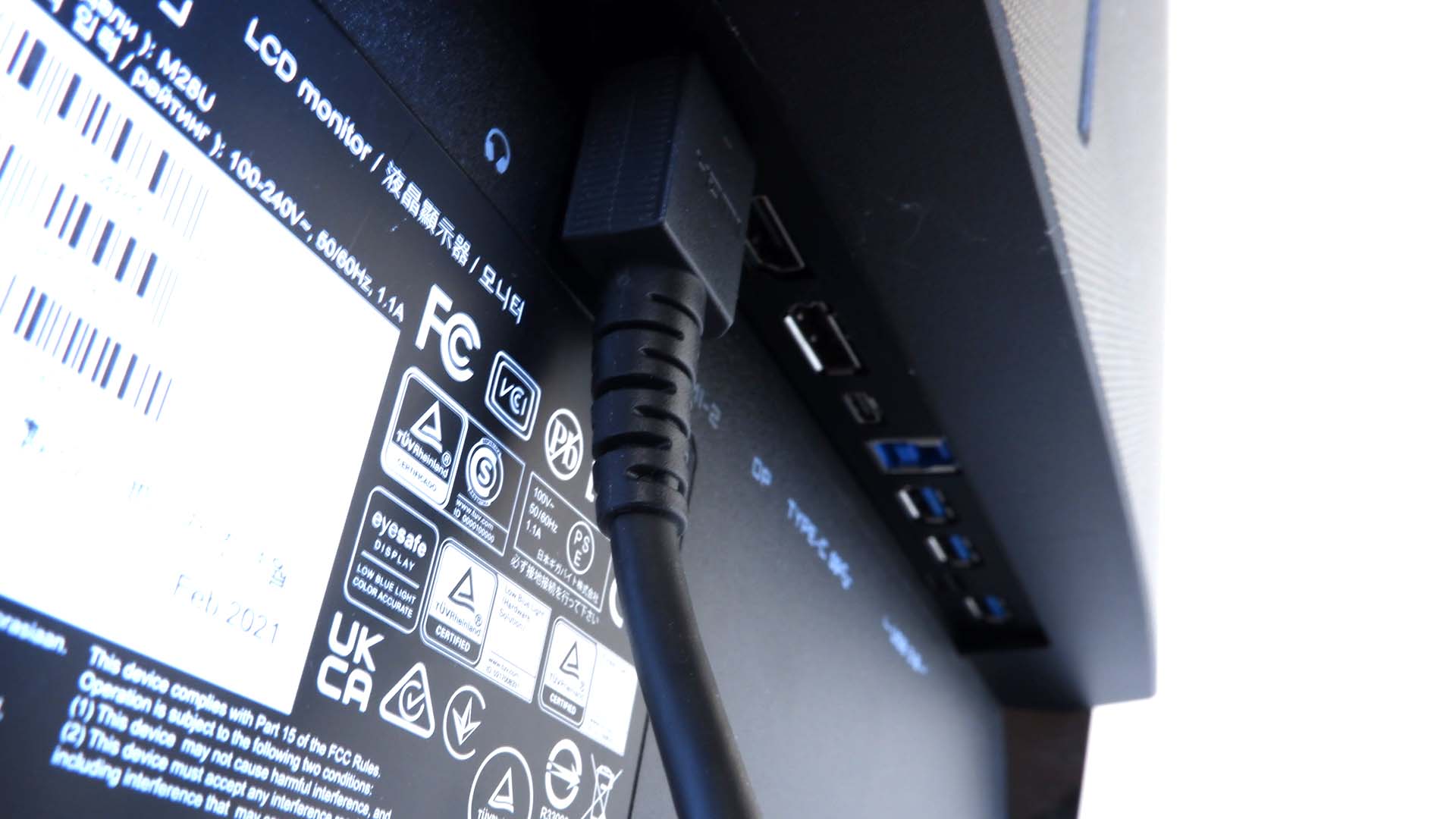
4K has been a prohibitively expensive venture in PC gaming for many years now. That comes down to a simple truth: it's a helluva lot of pixels to be moving around all at once. Pixel pushing power equals money—you need a graphics card capable of the task and a gaming monitor able to display the final result to experience 4K at its best. And neither has come cheap for the longest time.
That's all starting to change, though, as the Gigabyte M28U proves by its superb value and excellent 4K feature set. Not only is this a great monitor for PC gamers either, as support for HDMI 2.1 makes it a great option for Xbox Series X and PlayStation 5 owners too.
Within its four slim bezels, the Gigabyte M28U contains a 28-inch IPS panel. The IPS panel tech delivers exceptional color depth and clarity, and performs well in most other regards, especially viewing angles. Most especially black and white levels, where even the slightest dip in contrast was noticeably discernable on-screen during testing. That clear delineation in black levels is awfully impressive for an IPS, too, especially one without a seriously impressive contrast spec such as this. The M28U is rated to 1,000:1, and there is also a touch of that tell-tale IPS glow around the edges on dark images, though neither is all that noticeable while gaming.
This monitor is also rated to DisplayHDR 400, though its brightness is the fairly standard 300 cd/m2. I wouldn't consider its HDR capabilities a big deal either way, and I definitely wouldn't recommend you pick up this monitor specifically for its HDR capabilities. It's not going to show off everything HDR has to offer. Not to mention HDR on Windows PCs is still not that fun an experience.
The M28U offers a rich canvas for gaming not just in picture quality, however, but also in response and refresh rate. With response times of 2ms MPRT and 1ms GTG, the M28U is quite quick.
The big sell though is the 144Hz refresh rate, as you no longer have to forgo high frame rates for the full-fat 4K resolution. The key thing here is having a GPU capable of driving such high frame rates in most games, which is no simple feat. AMD's Radeon RX 6900 XT managed just fine in my experience, but when I was testing the Asus GeForce RTX 3070 Noctua OC Edition, I found it was often struggling at 4K with high presets enabled—you really want to get all that detail on the screen, as well.
What makes the M28U an even bigger deal is that it's actually rather affordable. It's still quite a lot of money to throw down on a monitor alone, but considering what other 4K monitors with this sort of feature set are going for, it's as close to a steal as you're going to get at 4K.
Read our full Gigabyte M28U review.
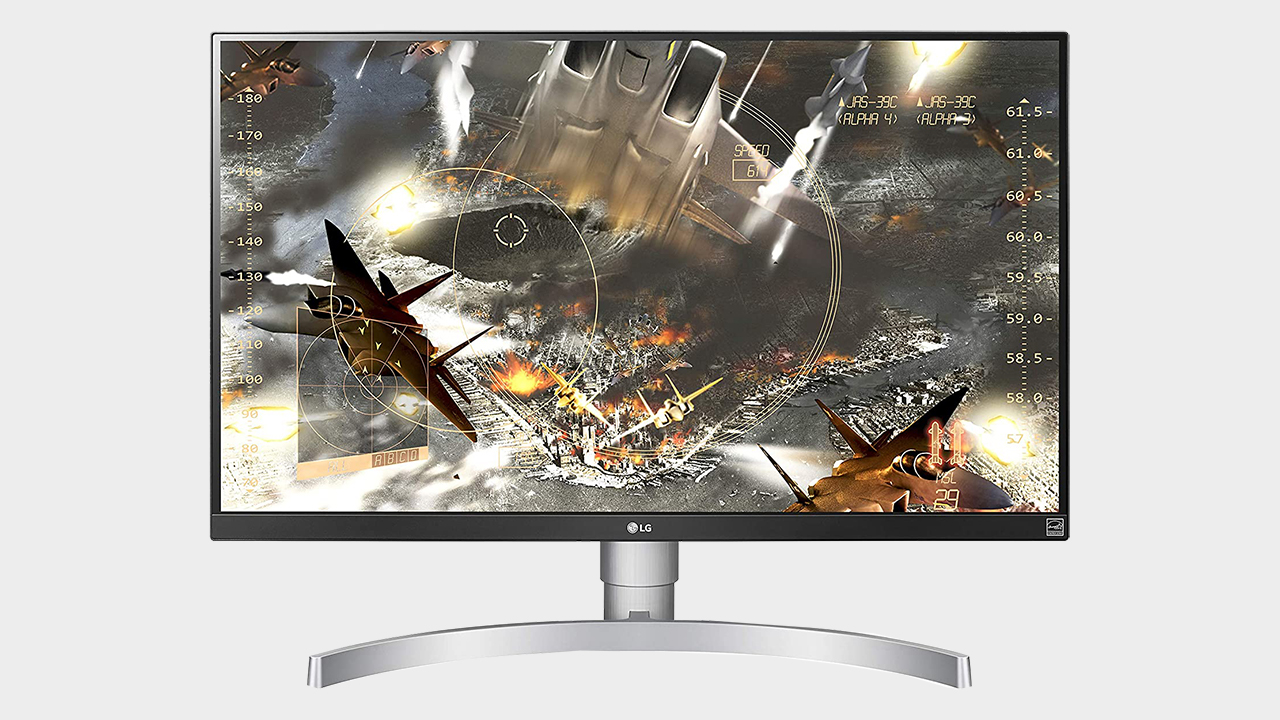
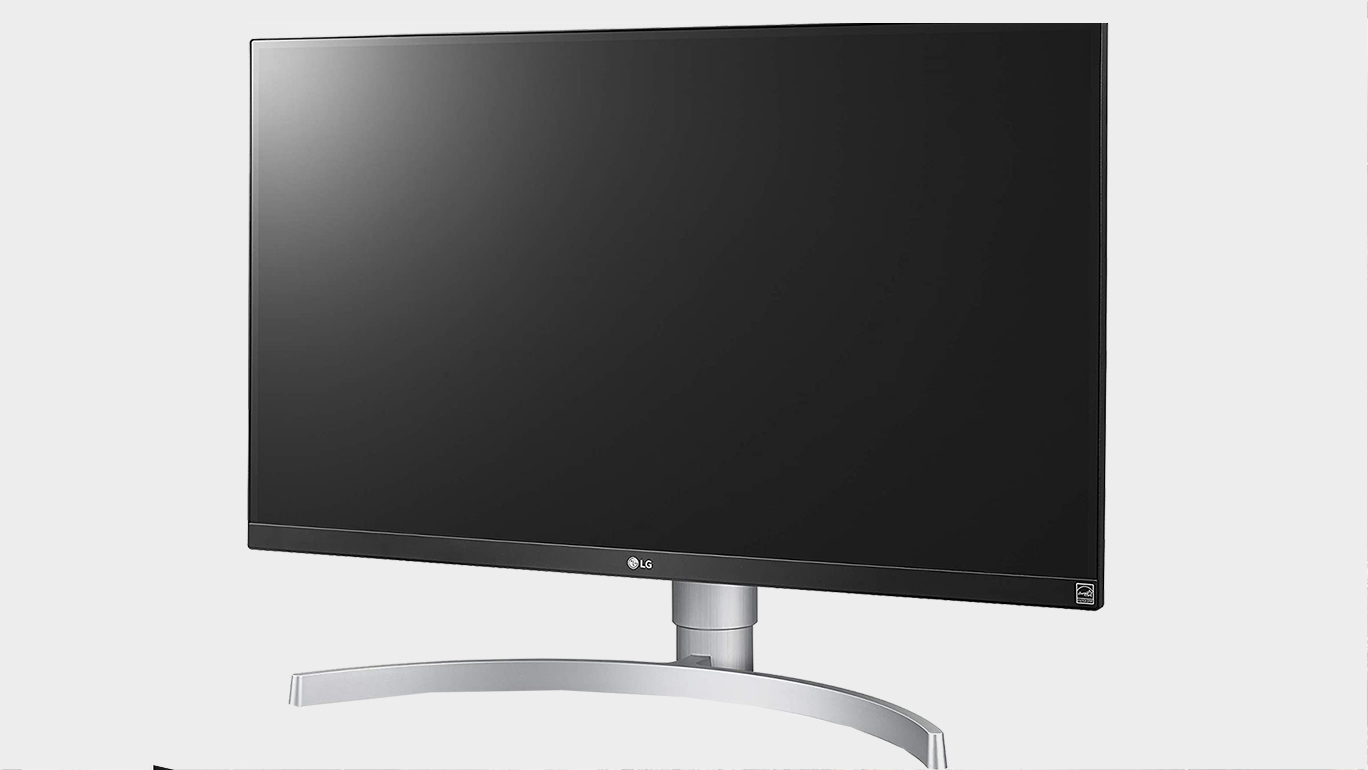

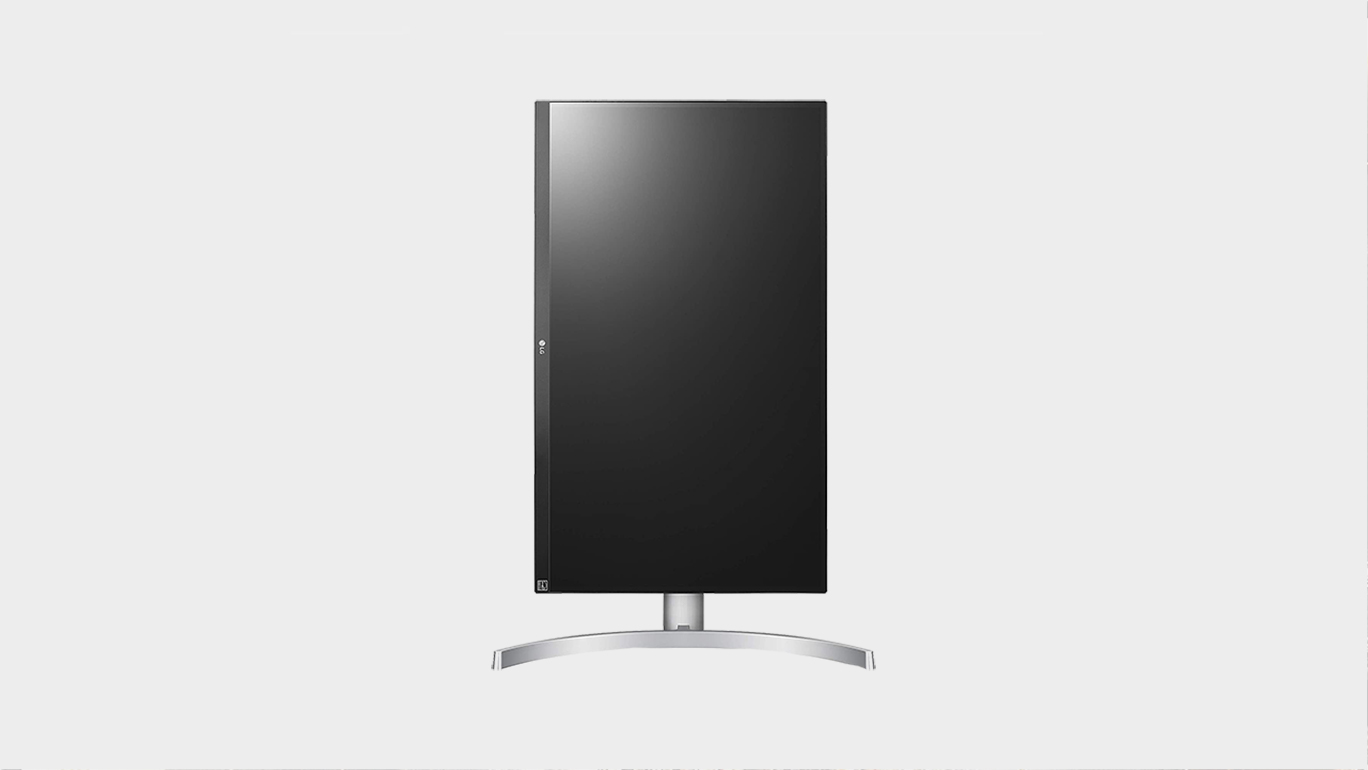
The LG 27UL650 is a solid 4K gaming monitor you can often find for under $500. This IPS panel display has improved color and contrast over its predecessor and offers lower input lag for gaming too.
If you do more than gaming, then this LG displays sports deliciously precise color accuracy and VESA HDR 400 too, making watching movies and editing a worthwhile endeavor. It boasts an sRGB 99% color gamut, which means your colors really are spot on.
The only real downside is the standard 60Hz refresh rate, which means it isn't a great option if you like your shooters to be of a competitive nature. There's nothing wrong with 60Hz for plenty of games, but we simply demand smoother frame rates from our screens these days, and that includes 4K panels.
There is another downside for gaming here, and that is that this monitor has no built-in speakers, so you'll have to invest in a good pair of headphones and/or desktop speakers, as well. But generally, we'd recommend that over pretty much any tinny display speaker anyway.
LG claims this is 'virtually borderless' too, which is a bit of a stretch, but the bezels on the top and sides are reasonably thin. It's got a phat ol' chin though. Still, if you really want to hurt your graphics card, hooking up a couple of these side by side will certainly give you an impressive amount of screen space.
Overall, this monitor does boast decent color accuracy and at an affordable price. Just be mindful that there are smoother panels out there. They just demand a lot more from your bank account for the privilege.
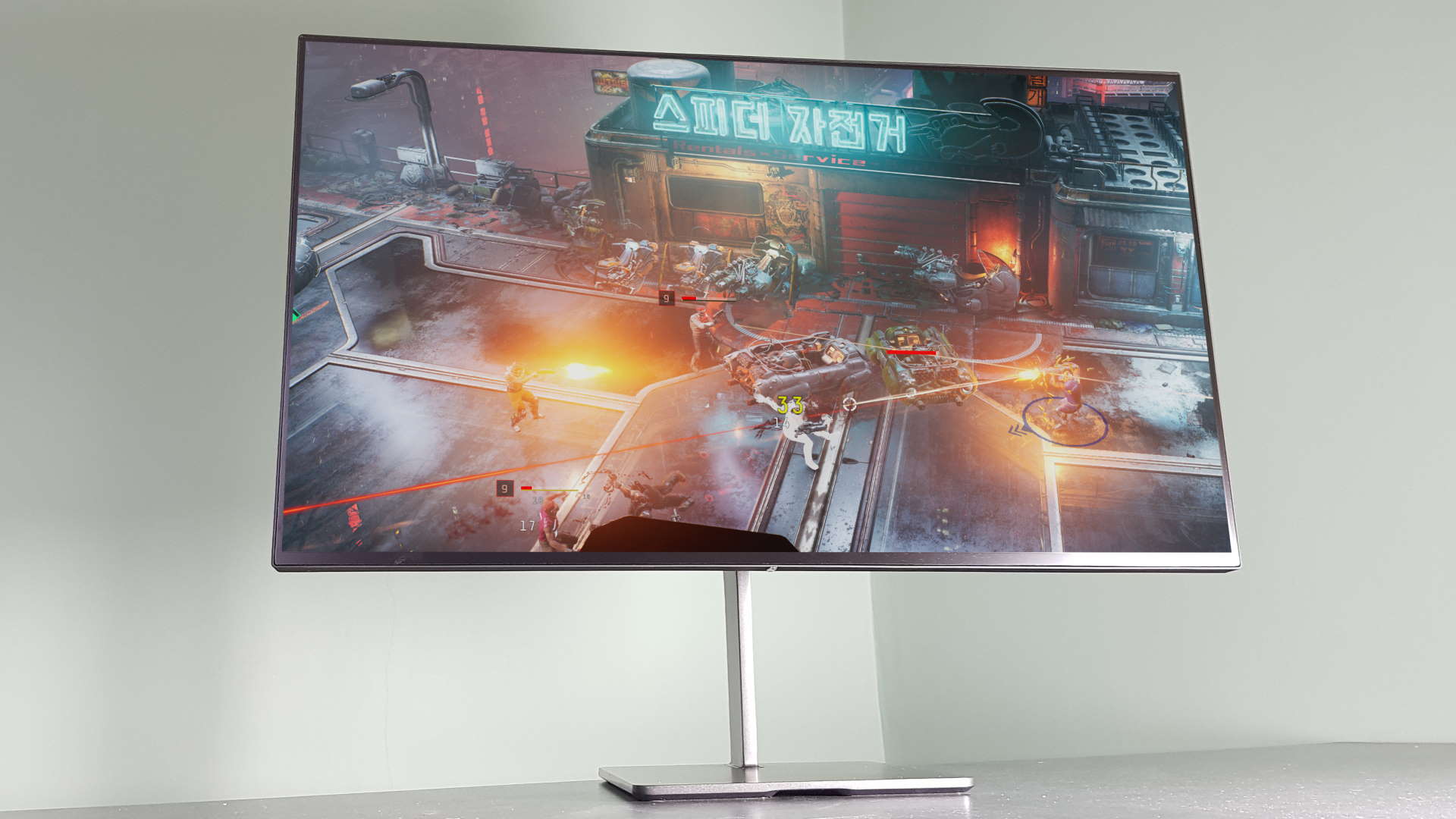
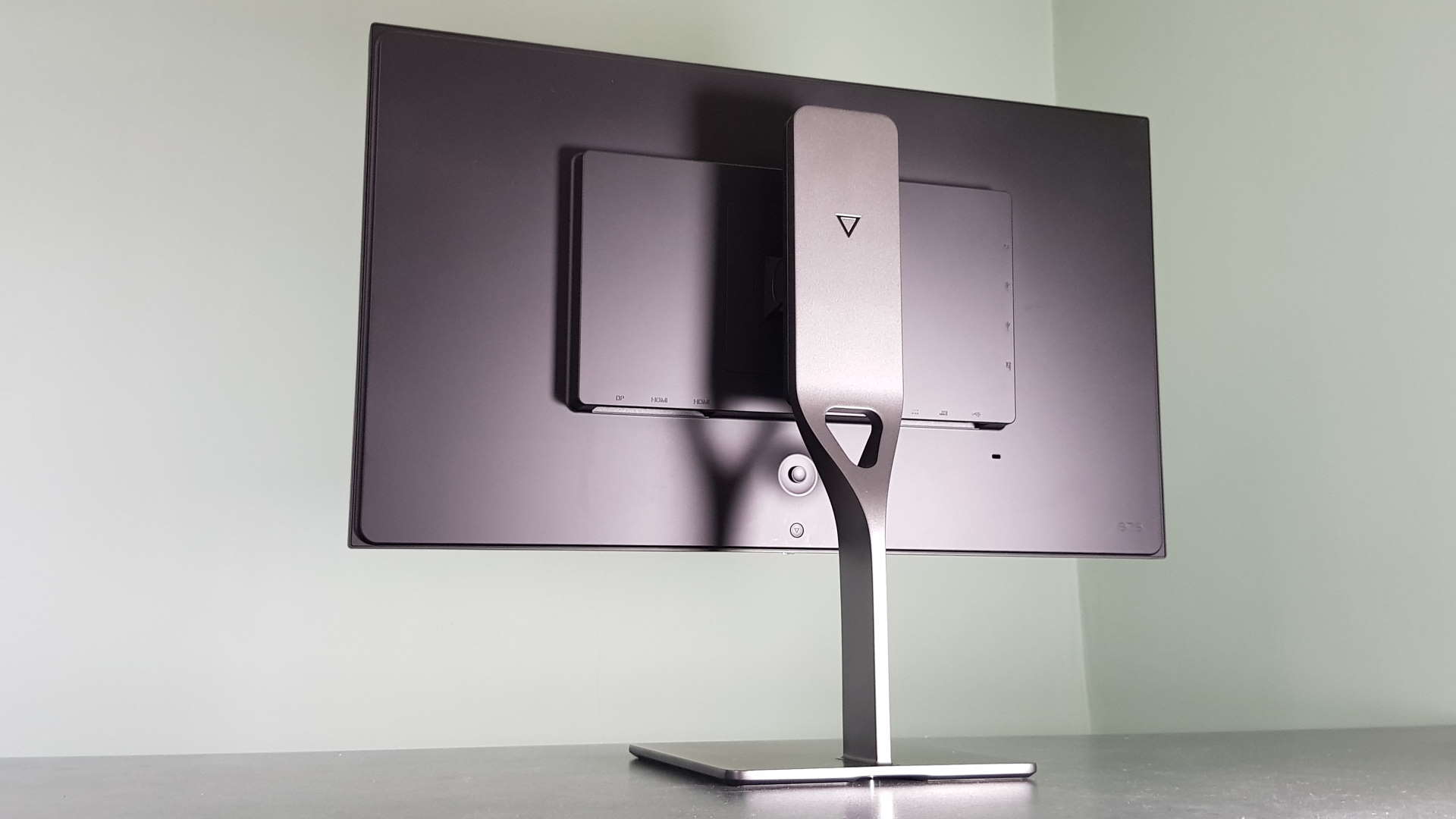
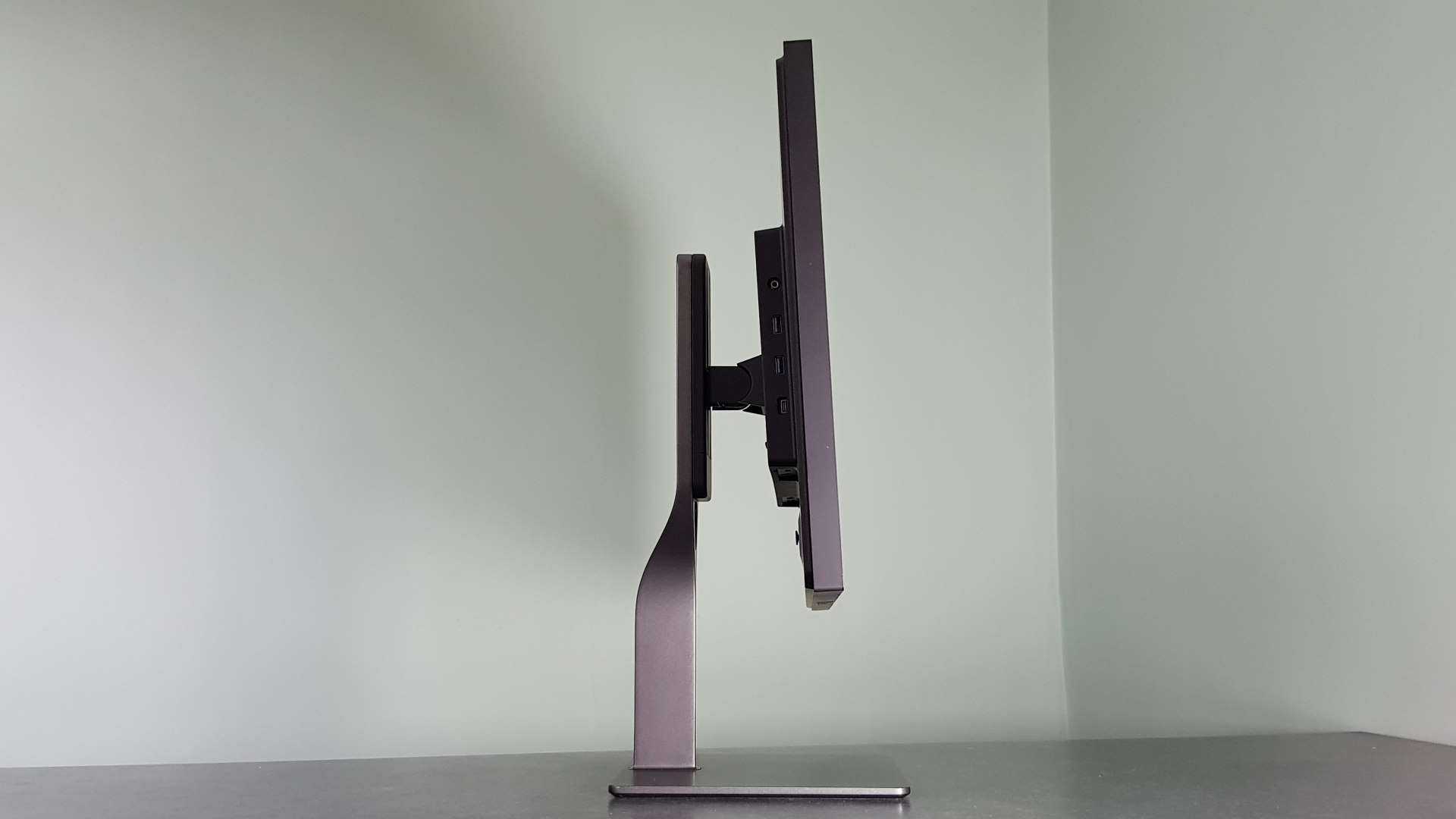
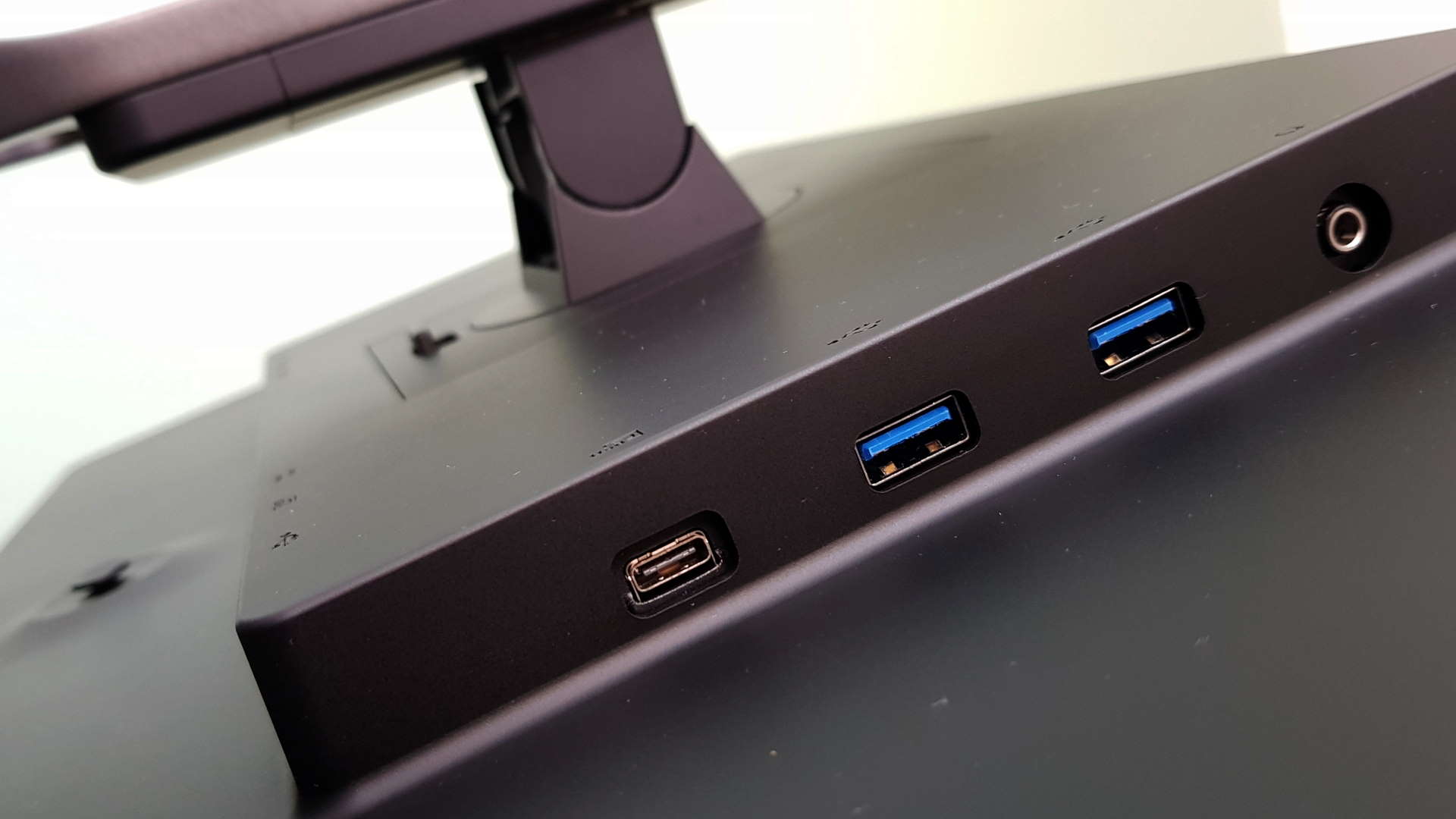
After a rocky start with its ill-fated foray into the world of tablets, Eve has smashed it out of the park with the Spectrum ES07D03. It's a beautifully designed gaming monitor, with a stunning LG panel, and all the features you could possibly want from a modern screen. That's the result of a crowd-designed creation process for the Spectrum, and it certainly looks like it's paid off.
Except for those wanting decent HDR. With a peak luminance of 750cd/m2, and a little local dimming in its backlighting array, I was hoping for a little more pizazz in my HDR scenes. Sadly, that's still a struggle for PC gaming and its monitors. But everything else the Eve Spectrum does has blown me away. The LG Nano IPS panel is superb, with vibrant colors, and great motion, and I'm a little bit in love.
The LG nano-IPS Oxide display is the heart of the Spectrum and is the key to the stellar visual experience the monitor itself provides. There are precious few panel manufacturers on the planet, and LG is undoubtedly one of the best. This latest nano-IPS display is an 8-bit + A-FRC screen, and one that can deliver 4K resolutions at 144Hz. For the professionals out there, it's rated with a color gamut that covers 98% DCI-P3 and 100% of the sRGB color space.
The Spectrum also rocks HDMI 2.1 support so it can deliver its full 144Hz promise across PC and next-gen console at 4K, something you previously needed a DisplayPort connection to do.
Running around a camp in Assassin's Creed: Valhalla, dimly lit by flickering torches and campfires, it was almost impossible to see what the hell was going on. Valhalla actually also highlighted the issue again with the animated saving logo looping over a black screen, causing the bleeding effect to be even more noticeable.
Like any 4K/144Hz screen you could mention, the price tag is potentially prohibitive. But gaming monitors are investments, and this is a screen that will outlast your current PC, and potentially your next one too. So it's always worth spending what you can possibly afford on a new screen.
Read our full Eve Spectrum review.
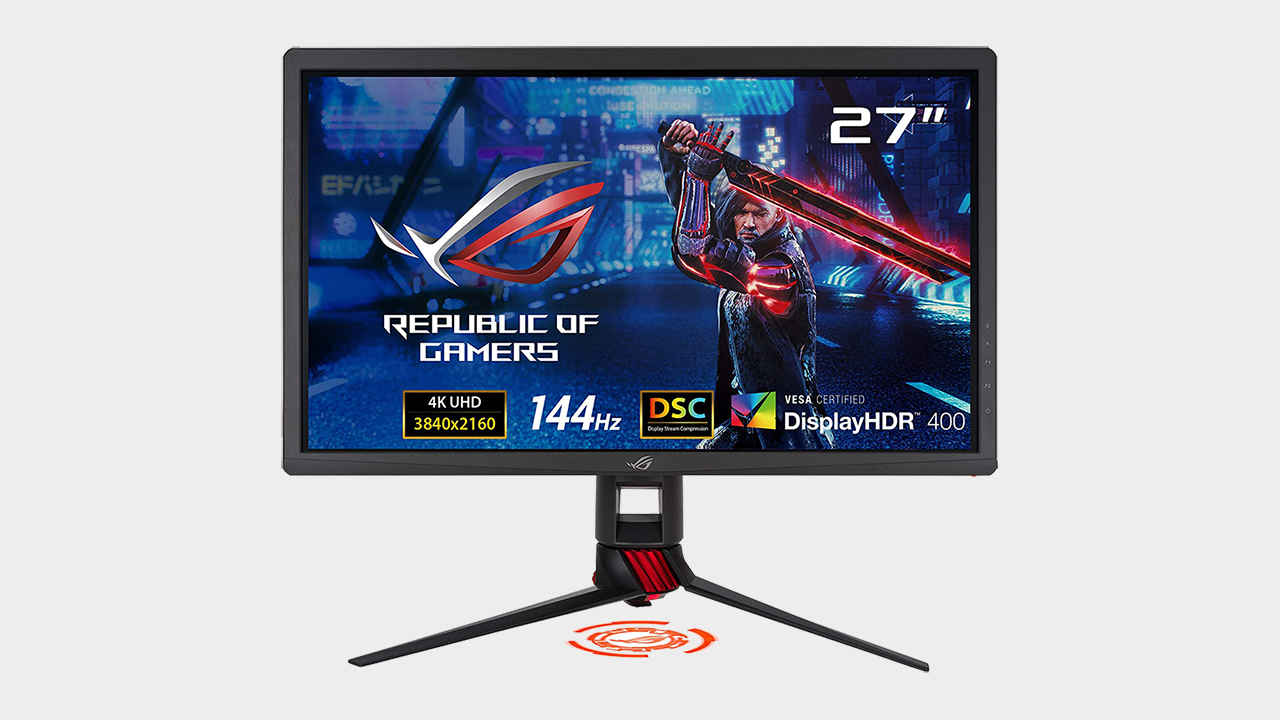
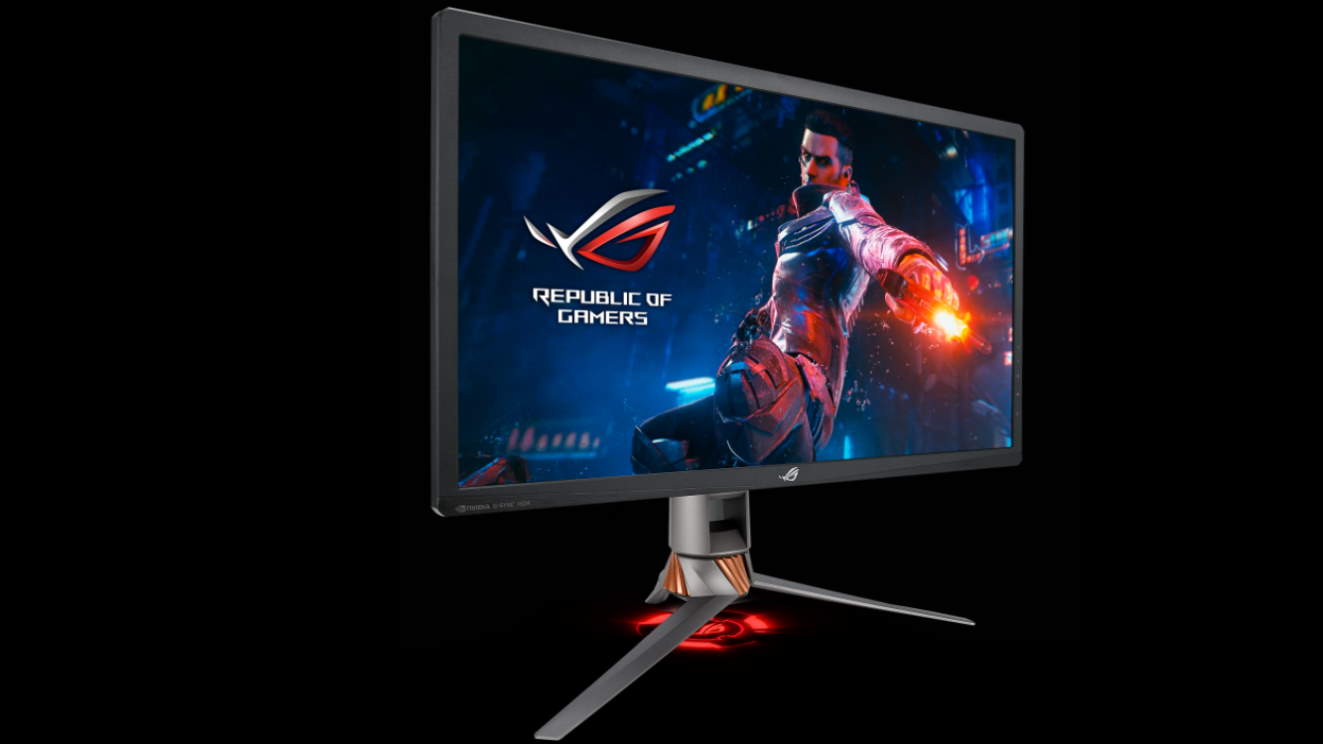
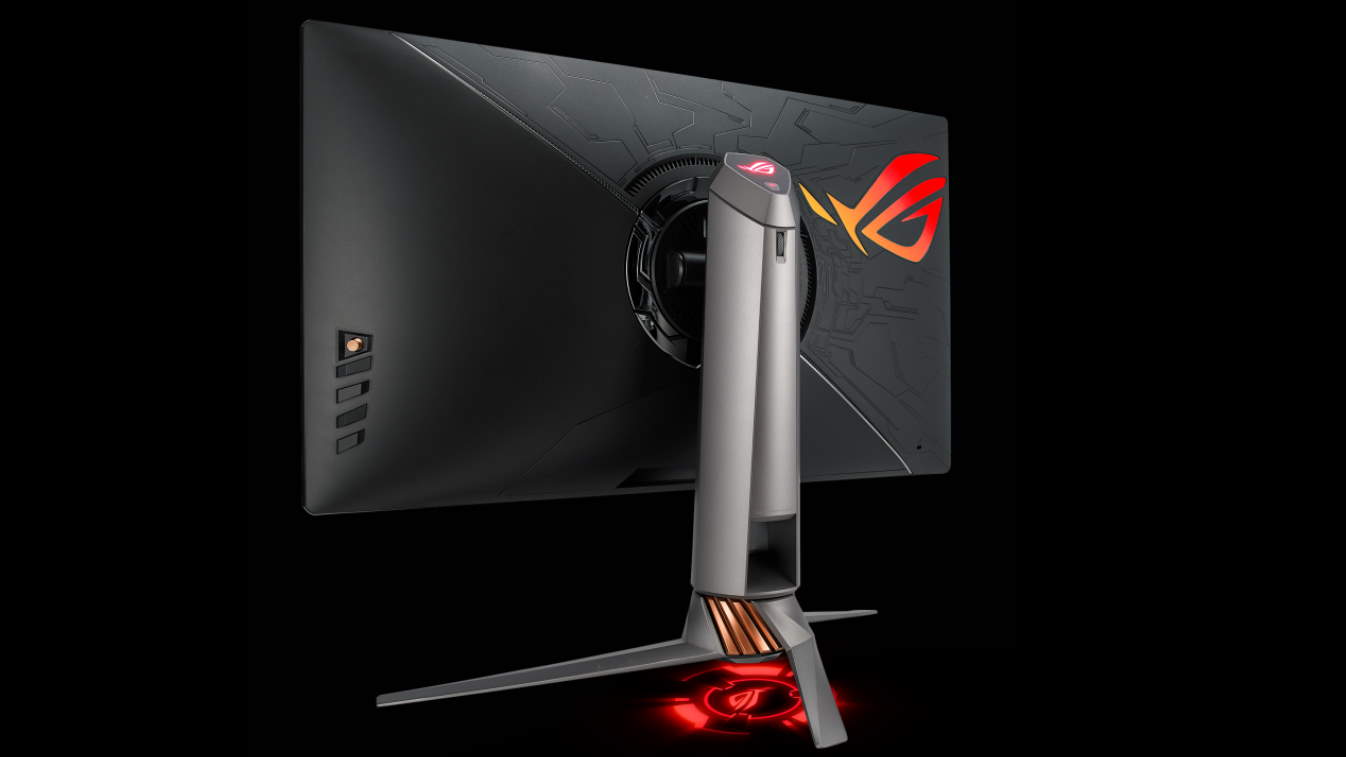
Perhaps a little obvious, but packing lots of top-end features into a display means it’ll come with a high price tag. The Asus ROG Swift PG27UQ is an incredible display but it doesn't come cheap. That money does net you more features than any other display here and perhaps that's enough to set it apart.
As well as the ridiculously clear, bright and detailed images that the PG27UQ’s 4K and HDR-enabled 27-inch display shows off, this monitor also incorporates Nvidia G-Sync tech, making this an absolute behemoth of a screen. Though we do wish the contrast was slightly better on this nearly perfect screen.
On the back, it’s a bit lean on the connections, but you should have everything you need: present are an HDMI 2.0 input, DisplayPort 1.4, 3.5mm audio, and two USB 3.0 ports. It’s also an incredibly well-designed bit of kit with the stand effectively funneling cables, as well as looking cool. I especially like the ROG eye that shines on the surface wherever you put the monitor.
The HDR and Quantum Dot IPS display make this monitor a standout from the rest of the crowd. Enabling HDR gives the graphics a noticeable dynamism in any resolution, though it sees the most benefit at 4K. Shadows are generally not too dark. Brightly lit scenes are not blown out. The PG27UQ excels especially well with gritty games like Metro Exodus and Outlast 2 with the HDR turned on—and honestly, the lighting looks just as good compared to ray tracing in some instances. But depending on the in-game lighting, some finer details will be too dark to make out. Brightly colored games are where this monitor really shines.
IPS displays in general allow you to view the screen from off-angle without the color quality being affected, but throwing Quantum Dot tech in there adds more backlighting to the LEDs, which allows for that wider color gamut. Also, the 144Hz refresh rate combined with G-Sync also helps create a near-flawless gaming experience. I didn't experience any screen tearing or micro stutter. Of course, you'll need to overclock the monitor to get up to 144Hz (via the display's OSD menu), but the native 120Hz isn't so bad. It's not like most games will even hit 120 fps on current hardware at 4K.
You'll want a great GPU to take advantage of everything—and that GPU should ideally be a GeForce graphics card or else G-Sync won't work. With the appropriate hardware, every game can run smoothly with the refresh rate synced to your framerate, whether that's at 40 fps or 144 fps. If you're targeting maximum framerates for competitive reasons, you'd probably be better off with a 1080p resolution and display. Running at 1080p and low to medium quality just to hit 144 fps would mean money wasted on this monitor. But this is a monitor for more than just games.
The list price is very high, so it might well put people off, but it will not disappoint those who take the plunge.
Read our full Asus ROG Swift PG27UQ review.
Best graphics cards | Best gaming motherboards | Best CPU for gaming
Best DDR4 RAM | Best Gaming PC build | Best gaming monitor
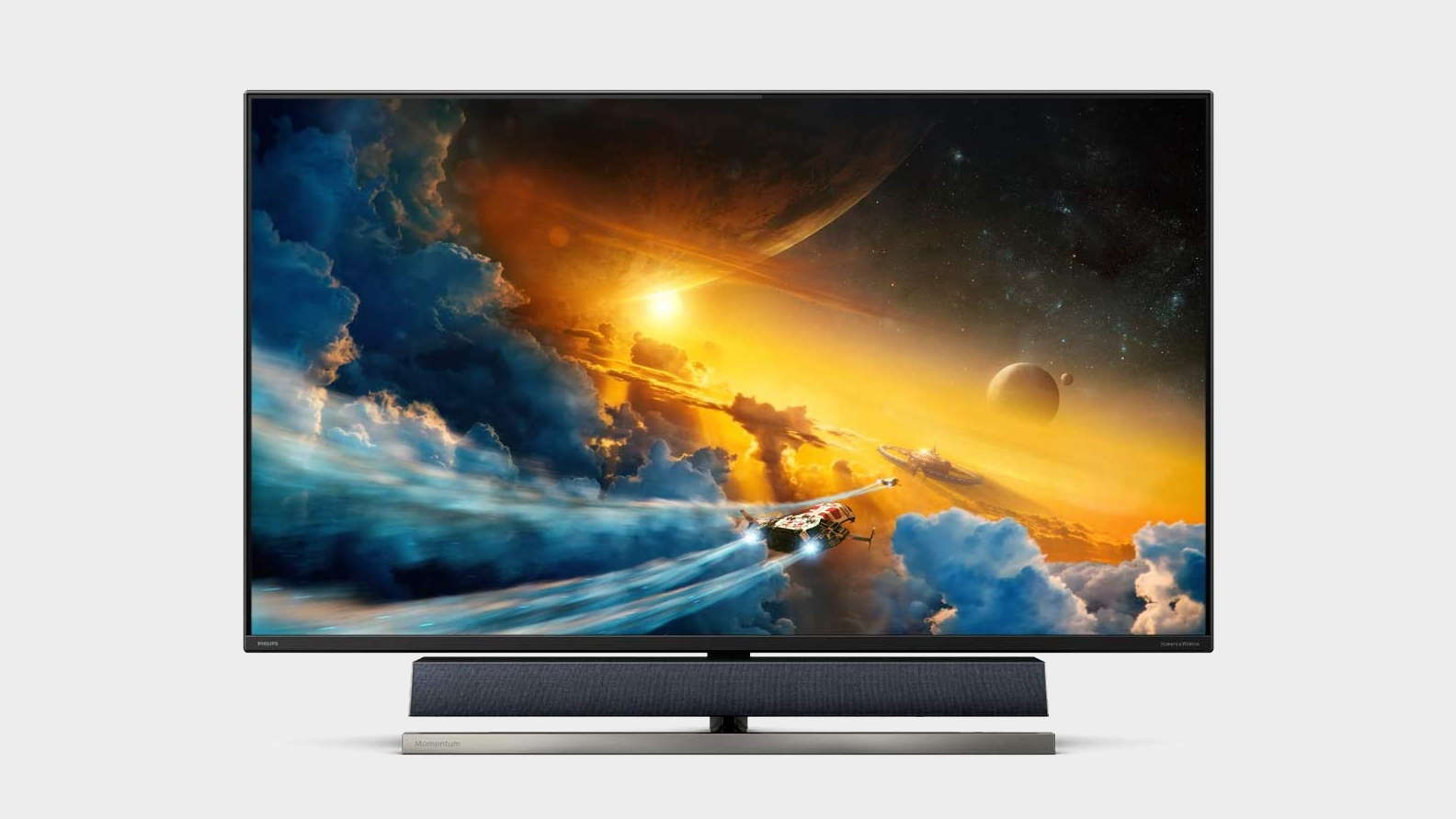
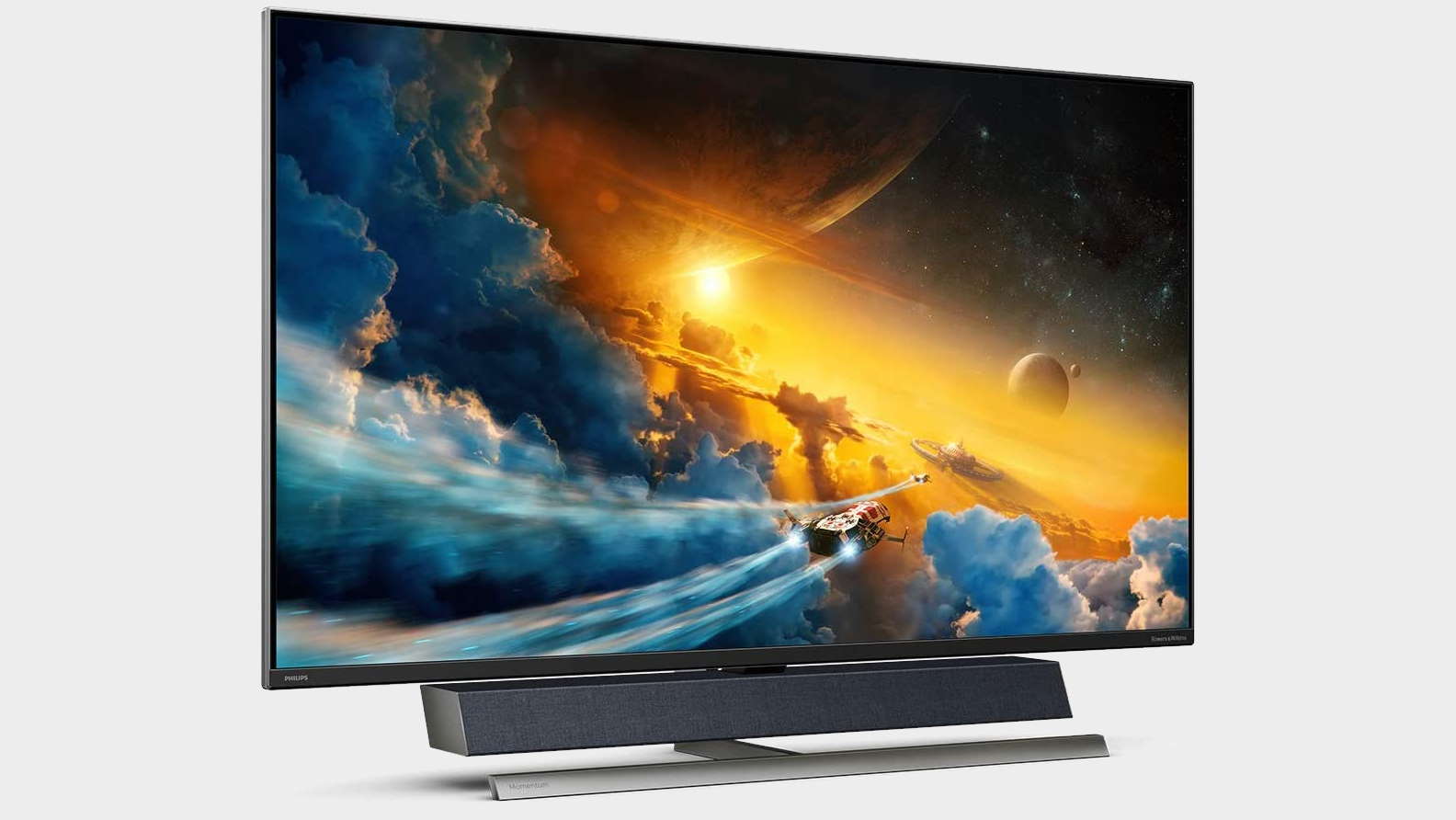
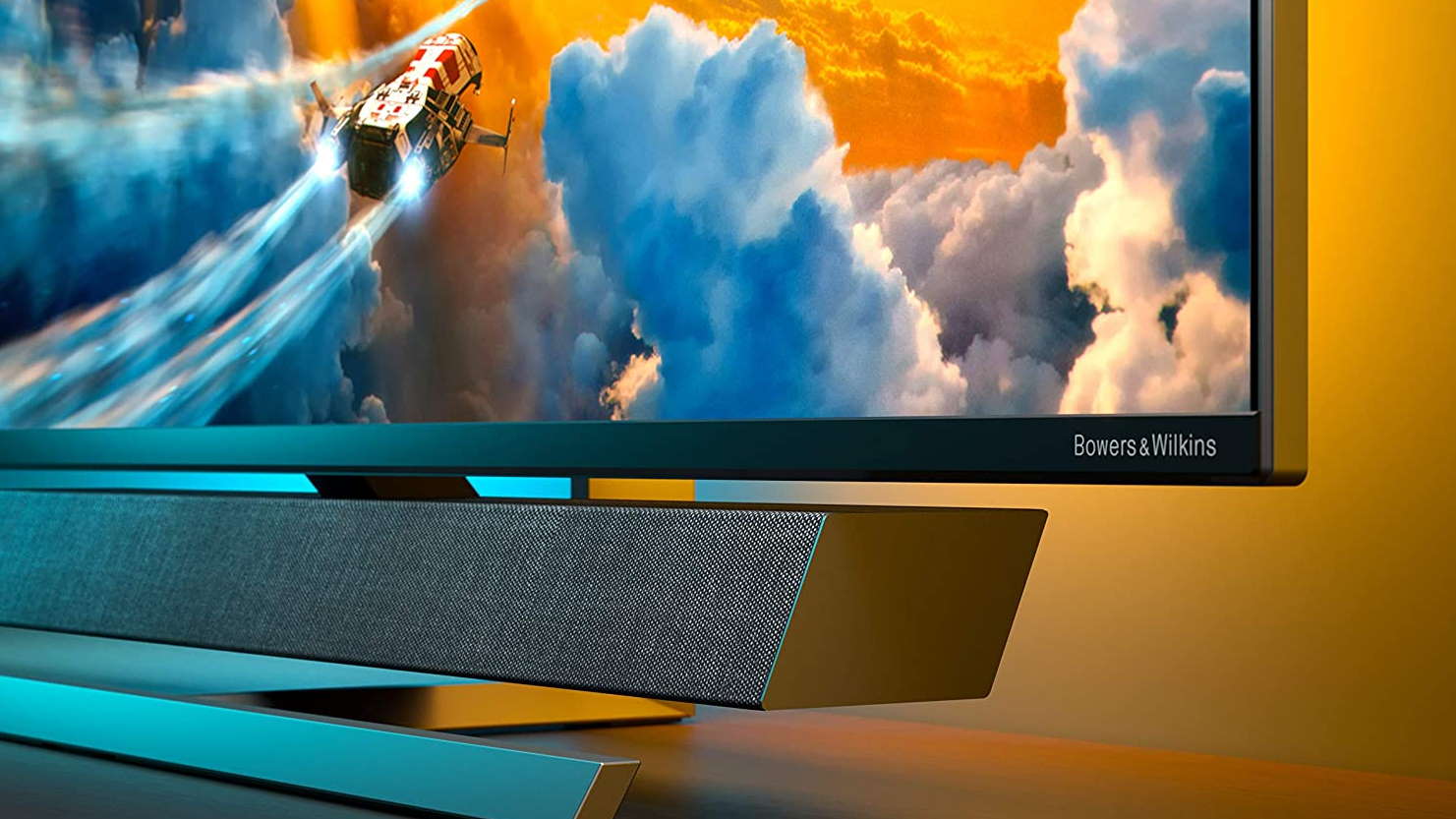
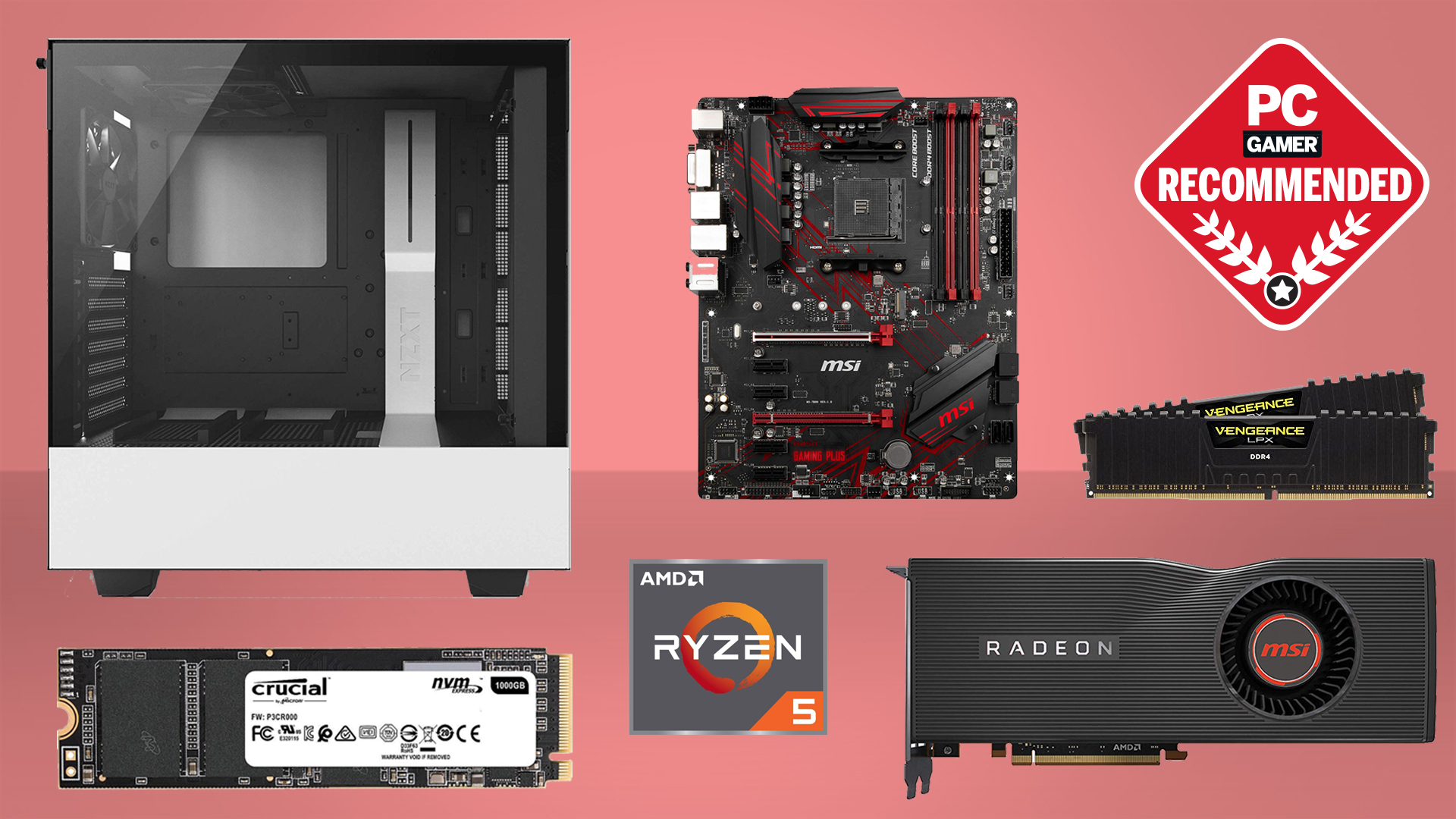
Best CPU for gaming: The top chips from Intel and AMD
Best graphics card: your perfect pixel-pusher awaits
Best SSD for gaming: Get into the game ahead of the rest
I am utterly entranced by the sheer scale and majesty of Philips' 55-inch monitor behemoth. Outside of Nvidia's abortive BFGDs, there is no other PC monitor that can match this monster. But despite its impressive size and speed, there are still shortcomings which, while they're not deal-breakers, do need to be considered.
But first the good. This 4K VA panel rocks up with a DisplayHDR 1000 certificate, and the ability to render its 3840x2160 native resolution at speeds of up to 120Hz. Sadly, for console gamers, its HDMI version is only 2.0 and so your next-gen game boxes will be restricted to 4K/60. The Series X will hit 120Hz at 1440p, however, although the PS5 still neglects that option.
For us PC folk, that's no issue, as the Philips display supports DisplayPort 1.4 so we can get the full 4K res at a zippy 120Hz. Coupled with its bright, vibrant panel, that makes the screen great for smooth 4K gaming. And I'm still smitten by Philips' Ambilight technology, which rings the back of the display with RGB LEDs that can alter hues individually to match their corresponding color on the panel itself.
My only real reservations surround some of the response settings. To make the large panel responsive Philips offers different levels of SmartResponse, but the more aggressive you get on those settings the more inverse ghosting you tend to get on high contrast moving images. Playing FIFA at 4K and I could notice issues around the edges of players. But if you're smashing through Doom Eternal, however, it's just going to be the smooth motion and vibrant colors that stand out. That and the gibs, obvs.
Best 4K gaming monitors FAQ
Is a 4K gaming monitor worth it for PC gaming?
The biggest thing to consider is whether you have a PC capable of making a 4K gaming monitor worth it. Upgrading to one of the best graphics cards will ensure your machine will not just be rendering a gaming slideshow with the step-up to 4K. It would help if you also aimed for a larger screen size too.
The first 4K monitor we ever tested was glorious but was only a 24-inch panel, so we couldn’t quite appreciate the 8.3 million pixels we were generating. Step that up to the 55-inch Philips Momentum monitor and your high resolution world is writ large.
How do we test 4K gaming monitors?
There are two main ways to test a screen to determine whether it's the best gaming monitor material. The first is by playing games on it. Subjectively testing the gaming performance of each panel isn’t necessarily going to give you the lowdown on the specifics of a particular screen. Still, it will let you test the functioning aspect ratio, native resolution, and any specific gamer-centric technologies they’re sporting.
Side-by-side comparative testing in this manner is also precious for keying into the sometimes subtle differences between each panel. When you use a screen in isolation, it’s easy to become blind to its comparative faults as you get used to them. Testing screens back-to-back allows us to discover and highlight specific issues between them.
We also use a heap of standardized tests produced by Lagom to ensure levels and saturation are visually up to our standards.
Should I go for an IPS, TN or VA panel?
We would always recommend an IPS panel over TN. The clarity of image, viewing angle, and color reproduction are far superior to the cheaper technology, but you'll often find a faster TN for cheaper. The other alternative, less expensive than IPS and better than TN, is VA tech. The colors aren't quite so hot, but the contrast performance is impressive.
Should I go for a FreeSync or G-Sync monitor?
In general, FreeSync monitors will be cheaper. It used to be the case that they would only work in combination with an AMD GPU. The same went for G-Sync monitors and Nvidia GPUs. Nowadays, though, it is possible to find G-Sync compatible FreeSync monitors if you're intent on spending less.
What aspect ratio should I go for?
Today's movies and games are best enjoyed in a widescreen format at a 16:9 aspect ratio or above. In 4:3, those cinematic moments will look stunted with black strips along the top and bottom. There are a host of minute variations on each ratio, but at the end of the day choosing between these depends entirely on your personal preference.
And the very far-out option, if you have a little extra cash to blow, is ultra-wide aspect ratios like 21:9 and 32:9 and their variants. These will provide a much more immersive, encompassing experience. Or literally, encompass yourself with a curved monitor, up to you.
Plenty of games support these ultrawide resolutions, and while not often full 4K, they do demand nearly as much out of your GPU and deliver a similarly high-fidelity and immersive experience.
Jargon buster - gaming monitor terminology
Refresh Rate (Hz)
The speed at which the screen refreshes. For example, 144Hz means the display refreshes 144 times a second. The higher the number, the smoother the screen will appear when you play games.
V-Sync
Graphics tech synchronizes a game's framerate with your monitor's refresh rate to help prevent screen tearing by syncing your GPU frame rate to the display's maximum refresh rate. Turn V-Sync on in your games for a smoother experience, but you'll lose information, so turn it off for fast-paced shooters (and live with the tearing). Useful if you have an older model display that can't keep up with a new GPU.
G-Sync
Nvidia's frame synching tech that works with Nvidia GPUs. It basically allows the monitor to sync up with the GPU. It does by showing a new frame as soon as the GPU has one ready.
FreeSync
AMD's take on frame synching uses a similar technique as G-Sync, with the biggest difference being that it uses DisplayPort's Adaptive-Sync technology which doesn't cost monitor manufacturers anything.
Ghosting
When movement on your display leaves behind a trail of pixels when watching a movie or playing a game, this is often a result of a monitor having slow response times.
Response Time
The amount of time it takes a pixel to transition to a new color and back. Often referenced as G2G or Grey-to-Grey. Slow response times can lead to ghosting. A suitable range for a gaming monitor is between 1-4 milliseconds.
TN Panels
Twisted-nematic is the most common (and cheapest) gaming panel. TN panels tend to have poorer viewing angles and color reproduction but have higher refresh rates and response times.
IPS
In-plane switching, panels offer the best contrast and color despite having weaker blacks. IPS panels tend to be more expensive and have higher response times.
VA
Vertical Alignment panels provide good viewing angles and have better contrast than even IPS but are still slower than TN panels. They are often a compromise between a TN and IPS panel.
HDR
High Dynamic Range. HDR provides a wider color range than normal SDR panels and offers increased brightness. The result is more vivid colors, deeper blacks, and a brighter picture.
Peak Brightness
This refers to the maximum brightness of a monitor or television and is measured in nits.
Ultrawide
Shorthand for monitors with aspect wider aspect ratios like 32:9 or 21:9
Resolution
The number of pixels that make up a monitor's display, measured by height and width. For example: 1920 x 1080 (aka 1080p), 2560 x 1440 (2K), and 3840 x 2160 (4K).
from PCGamer latest https://ift.tt/REL2Nnu
via IFTTT
Comments
Post a Comment